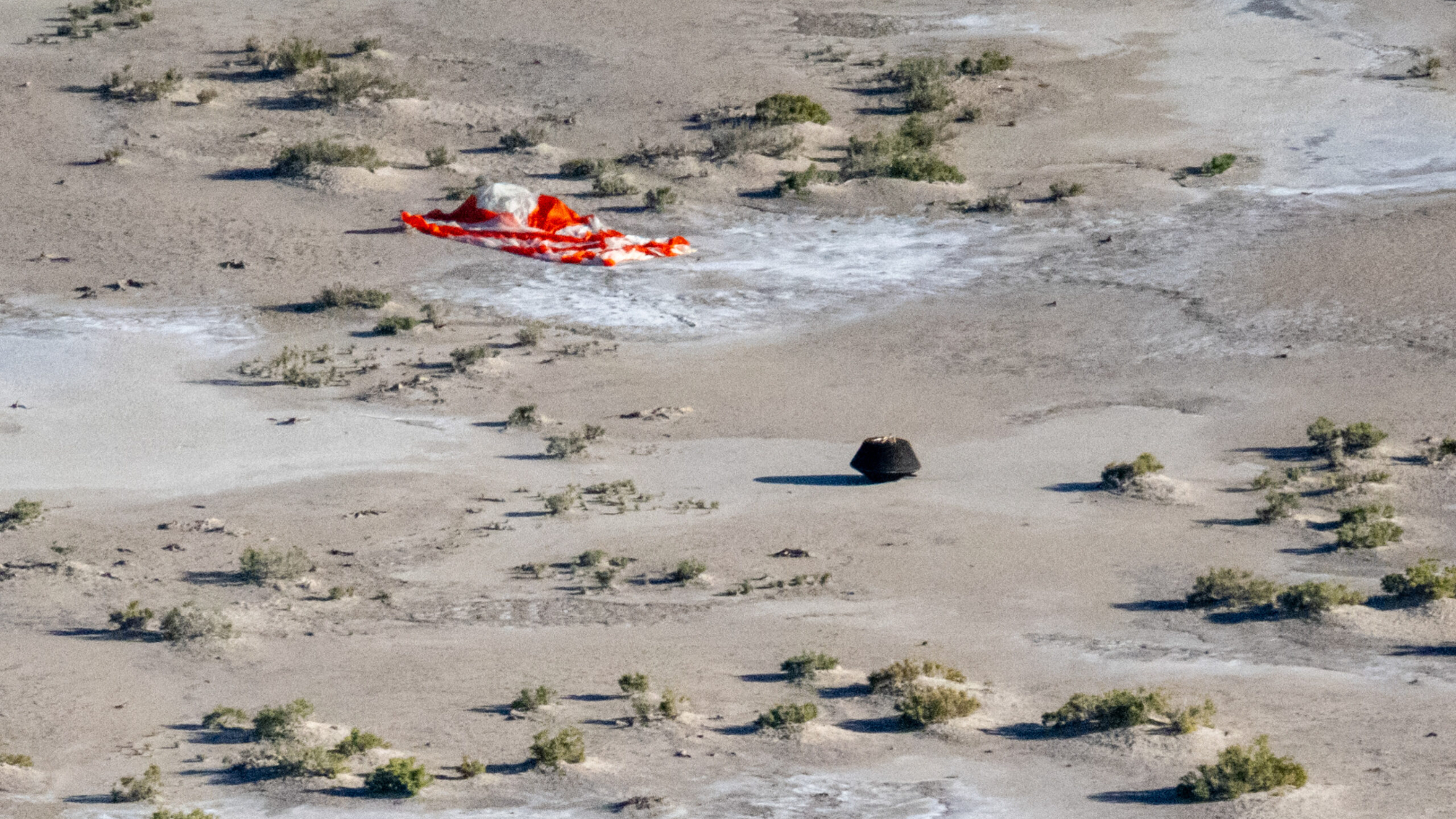Crossed wires caused parachute problem during OSIRIS-REx asteroid sample delivery, NASA says

NASA thinks it knows why the OSIRIS-REx asteroid probe's return capsule failed to deploy its drogue parachute as planned while descending through Earth's atmosphere on Sept. 24.
The problem, which did not prevent the capsule from landing safely and softly that day, was likely caused by crossed wires.
"After a thorough review of the descent video and the capsule's extensive documentation, NASA found that inconsistent wiring label definitions in the design plans likely caused engineers to wire the parachutes' release triggers such that signals meant to deploy the drogue chute fired out of order," agency officials wrote in a blog post on Tuesday (Dec. 5).
"In the design plans for the system, the word 'main' was used inconsistently between the device that sends the electric signals and the device that receives the signals," they added. "On the signal side, 'main' meant the main parachute. In contrast, on the receiver side, 'main' was used as a reference to a pyrotechnic that fires to release the parachute canister cover and deploy the drogue. Engineers connected the two mains, causing the parachute deployment actions to occur out of order."
Related: NASA's OSIRIS-REx lands samples of asteroid Bennu to Earth after historic 4-billion-mile journey
The drogue chute was supposed to deploy at an altitude of 100,000 feet (30,000 meters), helping to slow and stabilize the return capsule's descent ahead of main-chute deployment at around 10,000 feet (3,000 m).
As a result of the wiring problem, however, the drogue's retention cord was cut at deployment time, leaving the chute still in the capsule. The drogue stayed there until the capsule hit 9,000 feet (2,740 m), when the main chute opened. At that point, the drogue popped free into the air and fell away, with nothing holding it to the capsule.
Breaking space news, the latest updates on rocket launches, skywatching events and more!
But the main chute overcame the problem. Its "design was robust enough to stabilize and slow the capsule, resulting in a safe landing more than a minute earlier than expected," NASA officials wrote in the statement. "There was no negative impact to OSIRIS-REx’s Bennu sample as a result of the unexpected drogue deployment."
Bennu is the near-Earth asteroid that OSIRIS-REx visited, studied and sampled. The material that the probe snagged from Bennu's surface in October 2020 is now being processed at NASA's Johnson Space Center (JSC) in Houston.
Once that's done, researchers around the world will study the sample, searching for clues about the solar system's early days and the role that carbon-rich asteroids like Bennu may have played in bringing life's building blocks to Earth long ago.
The return capsule's parachute-release system is inside a protective glove box alongside the Bennu sample at JSC, NASA officials said. "Once the curation team there completes processing the sample material — the mission's top priority at present — NASA engineers will be able to access the parachute hardware and verify the cause," they wrote.

Michael Wall is a Senior Space Writer with Space.com and joined the team in 2010. He primarily covers exoplanets, spaceflight and military space, but has been known to dabble in the space art beat. His book about the search for alien life, "Out There," was published on Nov. 13, 2018. Before becoming a science writer, Michael worked as a herpetologist and wildlife biologist. He has a Ph.D. in evolutionary biology from the University of Sydney, Australia, a bachelor's degree from the University of Arizona, and a graduate certificate in science writing from the University of California, Santa Cruz. To find out what his latest project is, you can follow Michael on Twitter.
